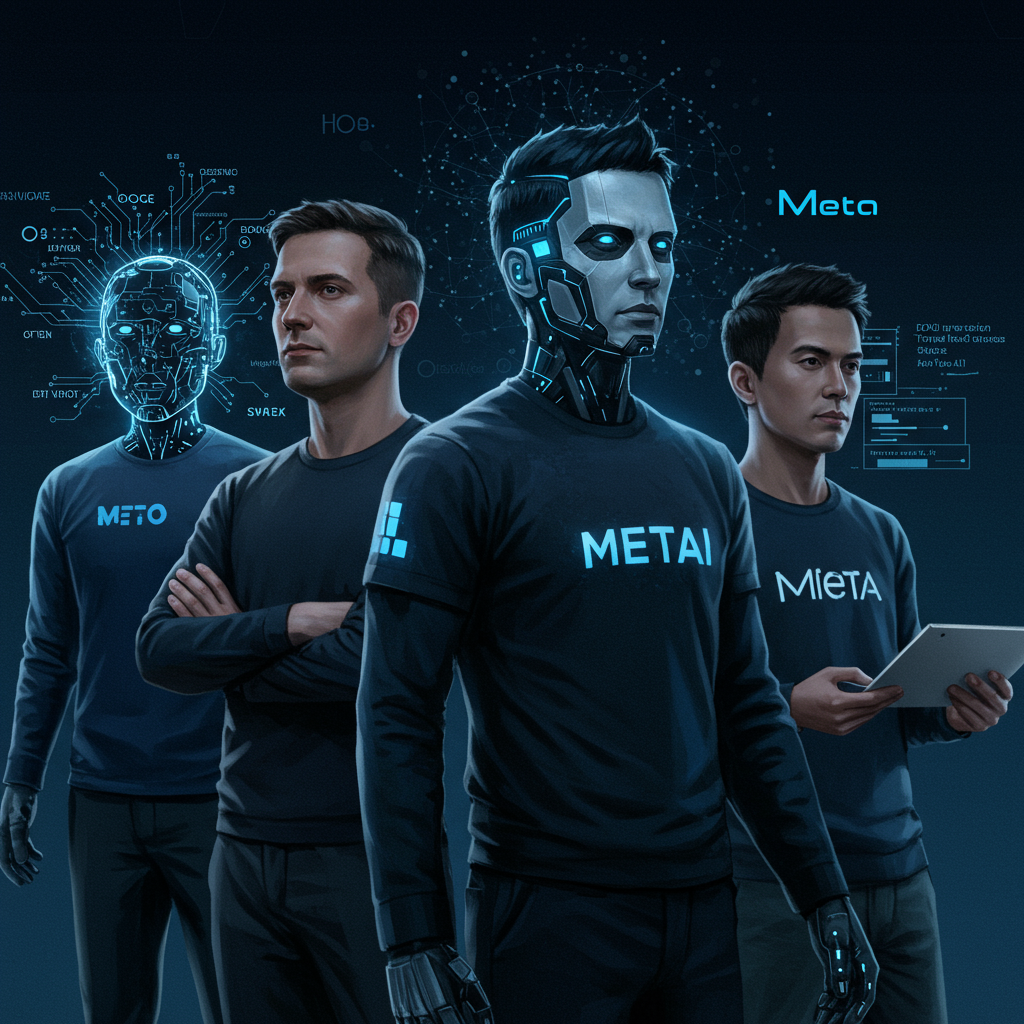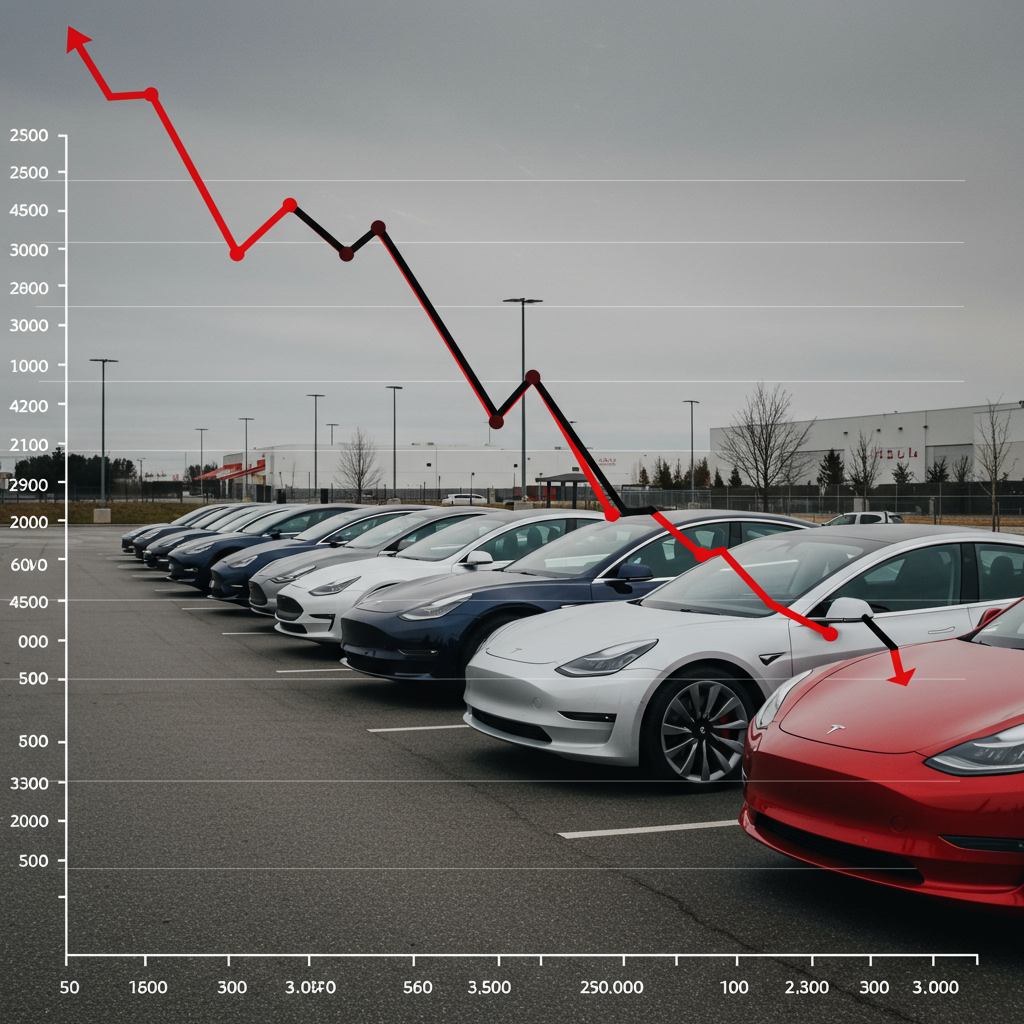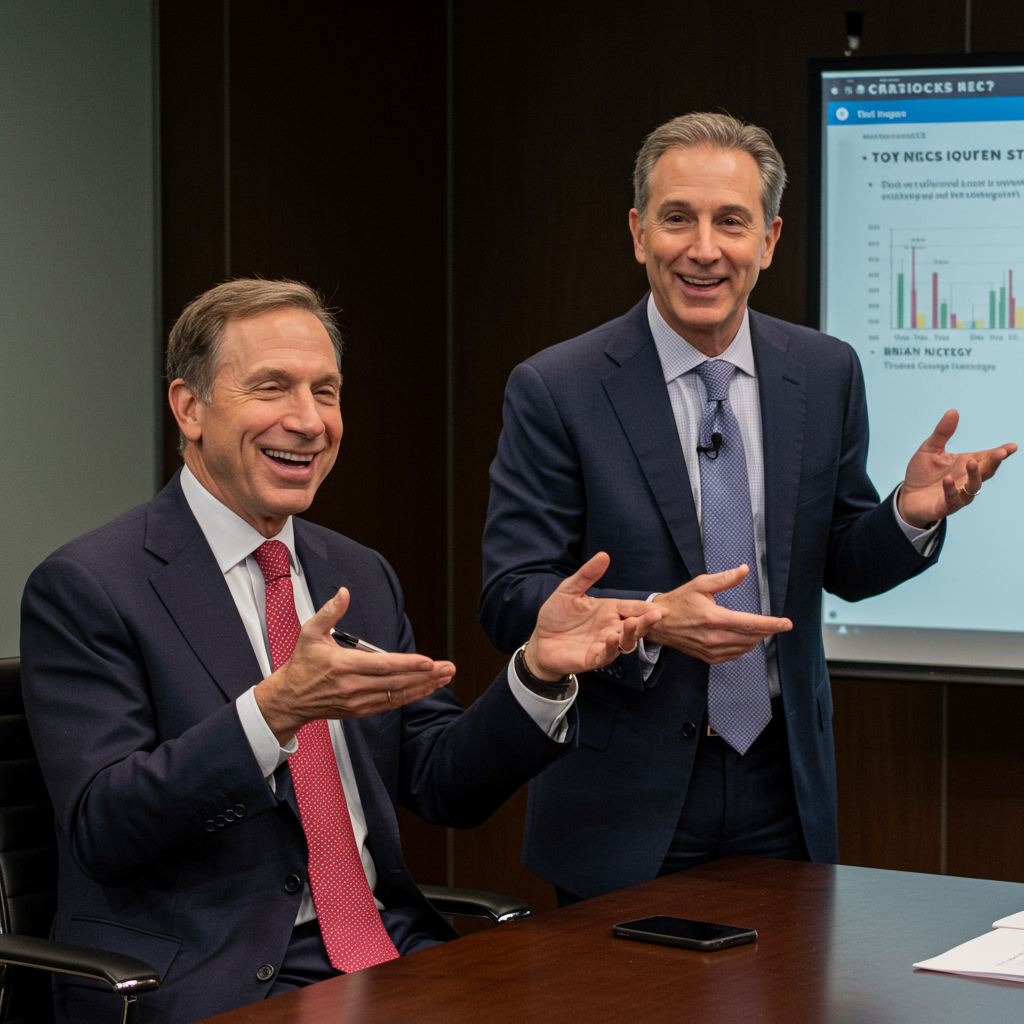Meta Platforms is significantly ramping up its artificial intelligence efforts, recently securing top talent from a key competitor. Reports confirm that Meta has successfully recruited four additional leading AI researchers from openai. This strategic move follows earlier hires and underscores the escalating competition for top minds in the artificial intelligence field.
The four researchers joining Meta are identified as Shengjia Zhao, Jiahui Yu, Shuchao Bi, and Hongyu Ren. Their arrival is seen as a major step for Meta as it aims to accelerate its AI development and challenge rivals like OpenAI and Google. The competitive landscape for AI talent is becoming increasingly fierce, with major tech companies actively vying for experts who can drive innovation forward. This latest recruitment round highlights the high stakes involved in the race to build the next generation of artificial intelligence.
Meta Builds a ‘Superintelligence’ Team
These new hires are reportedly integrating into a newly formed “superintelligence” unit within Meta. This ambitious division is spearheaded by Alexandr Wang, formerly the chief executive of the AI data tagging startup Scale AI. Wang’s own recruitment preceded the formal establishment of this unit, signalling Meta’s commitment to a new phase of AI research. Alexandr Wang has publicly expressed enthusiasm about collaborating with these researchers. Their collective goal is reportedly to work towards achieving “superintelligence,” generally defined as AI surpassing human cognitive abilities. Other notable figures in the AI community, such as Daniel Gros and Nat Friedman, are also expected to collaborate with this new unit, assembling a formidable team.
The creation of this superintelligence unit is part of Meta’s broader strategic push in artificial intelligence. Earlier corporate maneuvers included hiring Wang away from Scale AI. Meta also acquired a substantial 49% stake in Scale AI for an estimated $14.3 billion (£10.3bn) back in June. These actions collectively demonstrate Meta’s determination to gain ground and potentially lead in the rapidly evolving AI domain. Bringing in seasoned researchers from a front-runner like OpenAI is a clear signal of this intent.
The Researchers Joining Meta
The group of four researchers joining Meta brings diverse and valuable expertise from their time at OpenAI and other leading tech firms. Their backgrounds underscore the global nature of top-tier AI talent.
Shengjia Zhao: Joined OpenAI in 2022, contributing to foundational AI research.
Ren Hongyu: Played a role in the development of several significant OpenAI models. These include o3-mini, o1-mini, o1, and the highly capable GPT-4o model.
Jiahui Yu: Most recently headed OpenAI’s Perception team since October 2023. Yu previously worked at Google’s AI subsidiary, DeepMind. There, Yu co-led projects related to Google’s Gemini AI model, one of OpenAI’s direct competitors.
Bi Shuchao: Joined OpenAI more recently in May 2024. Bi served as the head of multimodal post-training, a technique vital for refining chatbot outputs and enhancing their ability to understand and generate different types of data. Bi also has prior experience at Google from 2013 to 2019.
All four researchers reportedly studied at prestigious universities in China before pursuing advanced degrees at prominent institutions in the United States. This educational path highlights the flow of AI expertise across international borders.
Context: Reinforcing Llama and Competing at the Top
This wave of talent acquisition is happening shortly after Meta’s launch of its Llama 4 AI models in April. While Llama 4 was a significant release, reports indicated that its performance did not entirely satisfy CEO Mark Zuckerberg’s expectations. Additionally, Meta faced criticism regarding the specific version of Llama used for a commonly cited AI benchmark test.
The influx of seasoned OpenAI researchers is directly aimed at strengthening Meta’s internal capabilities. Their expertise is crucial for refining and advancing the Llama series. The company is looking to leverage this new talent to:
Enhance the fundamental architecture and training methodologies of future Llama models.
Improve the safety, reliability, and ethical deployment of Meta’s AI systems.
Accelerate the development of new generative AI features across Meta’s platforms.
Ensure future Llama models can effectively compete with leading models from Google and OpenAI.
Meta views a strong AI capability, particularly through the Llama models, as foundational. It supports not only existing products like Facebook and Instagram but also future ambitions like the metaverse. This aggressive hiring strategy is a clear indicator of Meta’s commitment to becoming a dominant force in artificial intelligence.
The Intense AI Talent War
The recruitment of these four researchers is part of a larger pattern of talent migration between Meta and OpenAI. Reports earlier in June indicated that Meta had already hired former OpenAI researcher Trapit Bansal for the superintelligence team. Meta also reportedly recruited researchers Lucas Beyer, Alexander Kolesnikov, and Zhai Xiaohua from OpenAI’s Zurich office. The combined reports suggest Meta has recently brought in at least eight researchers from OpenAI.
This talent movement vividly illustrates the intense competition for AI expertise among major tech giants. This rivalry extends beyond corporate strategy into public discourse. OpenAI CEO Sam Altman has openly commented on Meta’s hiring tactics. He suggested Meta was offering substantial signing bonuses, potentially reaching “$100 million,” to attract talent. However, he added he believed none of OpenAI’s “best people” had left up to that point. Meta’s CTO, Andrew Bosworth, responded to these comments. He acknowledged that senior leaders might receive offers with high potential value. However, he clarified that the “actual terms of the offer” were more complex than a simple, massive one-time bonus. This public disagreement highlights the pressure and high financial stakes involved in securing top AI professionals. While compensation is undoubtedly a major factor, other potential motivations for researchers moving include the scale and ambition of Meta’s projects (like the metaverse and its massive user base), access to immense computational resources and datasets, potential differences in research freedom or focus, and the opportunity to join a new, high-profile team like the superintelligence unit.
Implications of Consolidating AI Talent
The aggressive pursuit and hiring of top AI researchers by a few dominant companies like Meta raise significant questions for the broader tech industry and society. The concentration of leading AI minds within a handful of financially powerful corporations could accelerate breakthroughs. However, critics worry it might stifle competition and innovation elsewhere. Smaller companies, startups, and academic institutions struggle to compete with the lucrative compensation packages offered by tech giants. This financial dynamic could potentially lead to a consolidation of AI expertise and research direction among a select few.
Furthermore, this talent war carries potential regulatory and geopolitical implications. Governments are increasingly viewing AI talent as a strategic national asset. The movement of top researchers could lead to concerns about brain drain from other regions. It also highlights the immense influence major corporations wield over the direction of AI research. There is a growing call for regulatory frameworks. These frameworks aim to balance promoting innovation with ensuring fair competition, transparency, and ethical practices in talent acquisition and AI development itself.
The battle for AI talent is more than just a series of job changes; it symbolizes the escalating race for technological supremacy. Human capital is arguably the most crucial differentiator in building advanced AI systems. Companies that successfully recruit and retain the best researchers are better positioned to achieve breakthroughs, develop leading models like Llama, and shape the future of artificial intelligence. This intense competition is likely to continue driving rapid innovation but also poses challenges related to talent sustainability and equitable access to AI progress.
Frequently Asked Questions
Who are the four OpenAI researchers Meta recently hired?
Meta has reportedly hired four additional key AI researchers from OpenAI: Shengjia Zhao, Jiahui Yu, Shuchao Bi, and Hongyu Ren. This follows earlier Meta hires from OpenAI, including Trapit Bansal and three researchers from OpenAI’s Zurich office. These individuals bring significant experience in areas like model development, perception, and multimodal AI.
Why is Meta hiring so many researchers from OpenAI?
Meta’s aggressive recruitment is part of its strategy to significantly boost its AI capabilities. This effort follows reports that the recent Llama 4 models did not fully meet internal expectations. The new hires are joining a dedicated “superintelligence” unit led by Alexandr Wang. Their goal is to accelerate AI advancements, improve the performance of Meta’s Llama models, and gain a competitive edge against rivals in the AI race.
What does the Meta-OpenAI talent war mean for the future of AI?
The intense competition for AI talent between companies like Meta and OpenAI signifies the high stakes in developing next-generation AI. While it can drive rapid innovation within these companies, it also raises concerns about consolidating expertise among a few players, potentially hindering smaller firms. It also highlights the immense value of AI professionals and could influence global AI research direction and compensation standards.
Conclusion
Meta’s hiring of four additional elite researchers from OpenAI is a significant development in the ongoing AI talent war. This move, part of building a new “superintelligence” unit under Alexandr Wang, aims to bolster Meta’s AI capabilities, particularly in refining its Llama models following perceived shortcomings with Llama 4. The competitive landscape for AI talent remains fierce, marked by high financial incentives and public commentary between industry leaders. As major tech companies continue to vie for top AI minds, the trajectory of artificial intelligence development and the broader industry structure could see substantial shifts, raising important questions about competition, innovation, and the concentration of AI power.




